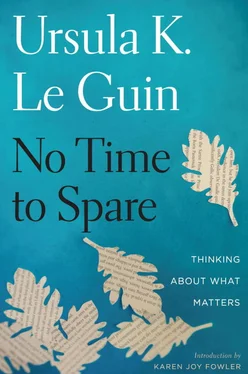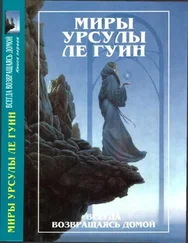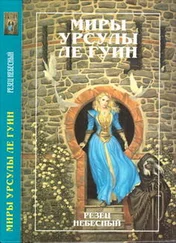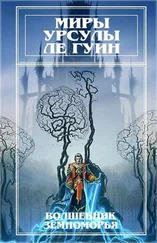It doesn’t have to be the way it is is a playful statement, made in the context of fiction, with no claim to “being real.” Yet it is a subversive statement.
Subversion doesn’t suit people who, feeling their adjustment to life has been successful, want things to go on just as they are, or people who need support from authority assuring them that things are as they have to be. Fantasy not only asks “What if things didn’t go on just as they do?” but demonstrates what they might be like if they went otherwise—thus gnawing at the very foundation of the belief that things have to be the way they are.
So here imagination and fundamentalism come into conflict.
A fully created imaginary world is a mental construct similar in many respects to a religious or other cosmology. This similarity, if noticed, can be deeply disturbing to the orthodox mind.
When a fundamental belief is threatened the response is likely to be angry or dismissive—either “Abomination!” or “Nonsense!” Fantasy gets the abomination treatment from religious fundamentalists, whose rigid reality-constructs shudder at contact with questioning, and the nonsense treatment from pragmatic fundamentalists, who want to restrict reality to the immediately perceptible and the immediately profitable. All fundamentalisms set strict limits to the uses of imagination, outside which the fundamentalist’s imagination itself runs riot, fancying dreadful deserts where God and Reason and the capitalist way of life are lost, forests of the night where tigers hang from trees by the tail, lighting the way to madness with their bright burning.
Those who dismiss fantasy less fiercely, from a less absolutist stance, usually call it dreaming, or escapism.
Dream and fantastic literature are related only on a very deep, usually inaccessible level of the mind. Dream is free of intellectual control; its narratives are irrational and unstable, and its aesthetic value is mostly accidental. Fantastic literature, like all the verbal arts, must satisfy the intellectual as well as the aesthetic faculty. Fantasy, odd as it sounds to say so, is a perfectly rational undertaking.
As for the charge of escapism, what does escape mean? Escape from real life, responsibility, order, duty, piety, is what the charge implies. But nobody, except the most criminally irresponsible or pitifully incompetent, escapes to jail. The direction of escape is toward freedom. So what is “escapism” an accusation of?
“Why are things as they are? Must they be as they are? What might they be like if they were otherwise?” To ask these questions is to admit the contingency of reality, or at least to allow that our perception of reality may be incomplete, our interpretation of it arbitrary or mistaken.
I know that to philosophers what I’m saying is childishly naive, but my mind cannot or will not follow philosophical argument, so I must remain naive. To an ordinary mind not trained in philosophy, the question—do things have to be the way they are/the way they are here and now/the way I’ve been told they are?—may be an important one. To open a door that has been kept closed is an important act.
Upholders and defenders of a status quo, political, social, economic, religious, or literary, may denigrate or diabolize or dismiss imaginative literature, because it is—more than any other kind of writing—subversive by nature. It has proved, over many centuries, a useful instrument of resistance to oppression.
Yet as Chesterton pointed out, fantasy stops short of nihilist violence, of destroying all the laws and burning all the boats. (Like Tolkien, Chesterton was an imaginative writer and a practicing Catholic, and thus perhaps particularly aware of tensions and boundaries.) Two and one make three. Two of the brothers fail the quest, the third carries it through. Action is met with reaction. Fate, Luck, Necessity are as inexorable in Middle-earth as in Colonus or South Dakota. The fantasy tale begins here and ends there (or back here ), where the subtle and ineluctable obligations and responsibilities of narrative art have taken it. Down on the bedrock, things are as they have to be. It’s only everywhere above the bedrock that nothing has to be the way it is.
There really is nothing to fear in fantasy unless you are afraid of the freedom of uncertainty. This is why it’s hard for me to imagine that anyone who likes science can dislike fantasy. Both are based so profoundly on the admission of uncertainty, the welcoming acceptance of unanswered questions. Of course the scientist seeks to ask how things are the way they are, not to imagine how they might be otherwise. But are the two operations opposed, or related? We can’t question reality directly, only by questioning our conventions, our belief, our orthodoxy, our construction of reality. All Galileo said, all Darwin said, was, “It doesn’t have to be the way we thought it was.”
April 2015
THESE ARE SOME thoughts about utopia and dystopia.
The old, crude Good Places were compensatory visions of controlling what you couldn’t control and having what you didn’t have here and now—an orderly, peaceful heaven; a paradise of hours; pie in the sky. The way to them was clear, but drastic. You died.
Thomas More’s secular and intellectual construct Utopia was still an expression of desire for something lacking here and now—rational human control of human life—but his Good Place was explicitly No Place. Only in the head. A blueprint without a building site.
Ever since, utopia has been located not in the afterlife but just off the map, across the ocean, over the mountains, in the future, on another planet, a livable yet unattainable elsewhere.
Every utopia since Utopia has also been, clearly or obscurely, actually or possibly, in the author’s or in the readers’ judgment, both a good place and a bad one. Every eutopia contains a dystopia, every dystopia contains a eutopia.
In the yang-yin symbol each half contains within it a portion of the other, signifying their complete interdependence and continual intermutability. The figure is static, but each half contains the seed of transformation. The symbol represents not a stasis but a process.
It may be useful to think of utopia in terms of this long-lived Chinese symbol, particularly if one is willing to forgo the usual masculinist assumption that yang is superior to yin, and instead consider the interdependence and intermutability of the two as the essential feature of the symbol.
Yang is male, bright, dry, hard, active, penetrating. Yin is female, dark, wet, easy, receptive, containing. Yang is control, yin acceptance. They are great and equal powers; neither can exist alone, and each is always in process of becoming the other.
Both utopia and dystopia are often an enclave of maximum control surrounded by a wilderness—as in Butler’s Erewhon, E. M. Forster’s “The Machine Stops,” and Yevgeny Zamyatin’s We. Good citizens of utopia consider the wilderness dangerous, hostile, unlivable; to an adventurous or rebellious dystopian it represents change and freedom. In this I see examples of the intermutability of the yang and yin: the dark mysterious wilderness surrounding a bright, safe place, the Bad Places—which then become the Good Place, the bright, open future surrounding a dark, closed prison… Or vice versa.
In the last half century this pattern has been repeated perhaps to exhaustion, variations on the theme becoming more and more predictable, or merely arbitrary.
Notable exceptions to the pattern are Huxley’s Brave New World, a eudystopia in which the wilderness has been reduced to an enclave so completely dominated by the intensely controlled yang world-state that any hope of its offering freedom or change is illusory; and Orwell’s 1984, a pure dystopia in which the yin element has been totally eliminated by the yang, appearing only in the receptive obedience of the controlled masses and as manipulated delusions of wilderness and freedom.
Читать дальше












